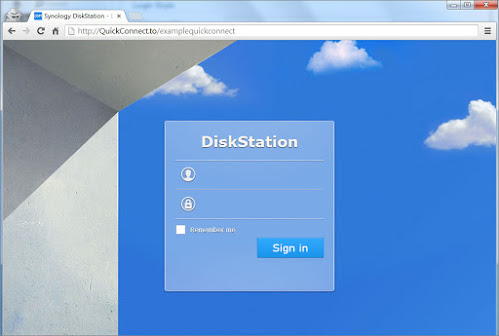I can’t find my router via router.synology.com what to do?
- Get link
- X
- Other Apps
There is a very basic requirement you need fulfill to access your router via router.synology.com by joining the your device in the router’s local network
Your device is the enquiring device here such as your PC, Laptop etc, make sure your devices are well connected to the Synology router. Their connection needs be wireless or via network cables.
Now you need to re-connect your PC to the synology router. This time try to connect the network cable to a different port of the router in case of port socket issue.
Without any complex configurations, just simply connect your PC with the router via network cable or wireless connection and try again.
Your device is the enquiring device here such as your PC, Laptop etc, make sure your devices are well connected to the Synology router. Their connection needs be wireless or via network cables.
Now you need to re-connect your PC to the synology router. This time try to connect the network cable to a different port of the router in case of port socket issue.
Without any complex configurations, just simply connect your PC with the router via network cable or wireless connection and try again.
How to sign in to SRM :-
Sign in to Synology Router Manager (SRM) in following ways :-
- Like before, ensure to connect your device and Synology Router in the same Internet or local network.
- Open any web browser on your device and in the URL/ address bar enter one of the following:
- Public IP address of Synology Router over the internet: 8000 for example “66.249.7x.1xx:8000. This is when the Synology router and your device are connected to the Internet.
- Private IP address of Synology Router over the local network:8000 for example 192.168.1.1:8000 or router.synology.com. This is when the Synology router and your device are connected over the same local network.
- Once entered, it will prompt you to the Login Page.
- Now type your username and password and click Sign in.
Note:
Your device can easily find the Synology Router via “router.synology.com” from everywhere, but not in the following circumstances under Operation Mode:
- Wireless Router/ Wireless Client: If your device has its DNS server redefined which is not pointed to the Synology Router for example “8.8.8.8”, then it won’t be able to find it via “router.synology.com“.
- Wireless AP: In the wired/wireless local network if your device adopts IPv6 then it cannot find the Synology Router via “router.synology.com“.
- Devices with IPv4/IPv6 adaptations may not find the Synology Router via “router.synology.com“.
- There is a configuration in which you can keep your device hidden from the Synology Router accessibility via “router.synology.com”.

How to Configure Wi-Fi Security settings of Synology Router
Once you are signed in, you will enter the SRM desktop. This is where you can start personalising your Synology products for example managing router settings, firmware updates and notifications.
Follow the below steps to enable Smart Connect for your Synology Router:
- Open Wi-Fi Connect > Wireless > Wi-Fi.
- Below the Smart Connect section, turn on Tri-band auto selection.
- Check the Enable wireless radio checkbox.
- Determine the following settings now:
- Scheme: You need to ensure under which conditions the WiFi bands will switch between 2.4GHz and 5GHz. Although detailed steps are mentioned below.
- SSID (WiFi name): You need to setup a name for your Synology Smart Connect wireless network. There is an option in the dropdown menu on the right where you can choose to show/hide your SSID.
- Security Level: Few security protocols are given by Synology under Security level drop down menu:
- None
- Opportunistic Wireless Encryption (OWE): There is no password requirement in it but still reliable in terms of protection.
- WEP: It provides a minimal protection and also requires username and password to access the wireless network. It’s a very basic protocol.
- WPA/WPA2-Personal: It requires users to login to the wireless network before joining in and it is more secure than WEP.
- WPA/WPA2-Enterprise: This protocol is basically designed for enterprises which usually requires users to authenticate themselves before use. An external authentication server is used in it.
- WPA2-Personal: Users are required to login to join the wireless network and it is more secure than WPA.
- WPA2-Enterprise: This protocol is also designed for enterprises which usually requires users to authenticate themselves before use. An external authentication server is used in it.
- WPA2/WPA3-Personal: It is more secure than WPA2. The client is automatically configured in it for the correct security encryption. It generally requires users to enter a password to access the wireless network.
- WPA3-Personal: Users are required to login to join the wireless network and it is more secure than WPA2.
- WPA3-Enterprise:This protocol is also designed for enterprises which usually requires users to authenticate themselves before use. An external authentication server is used in it.
- Get link
- X
- Other Apps


Comments
Post a Comment